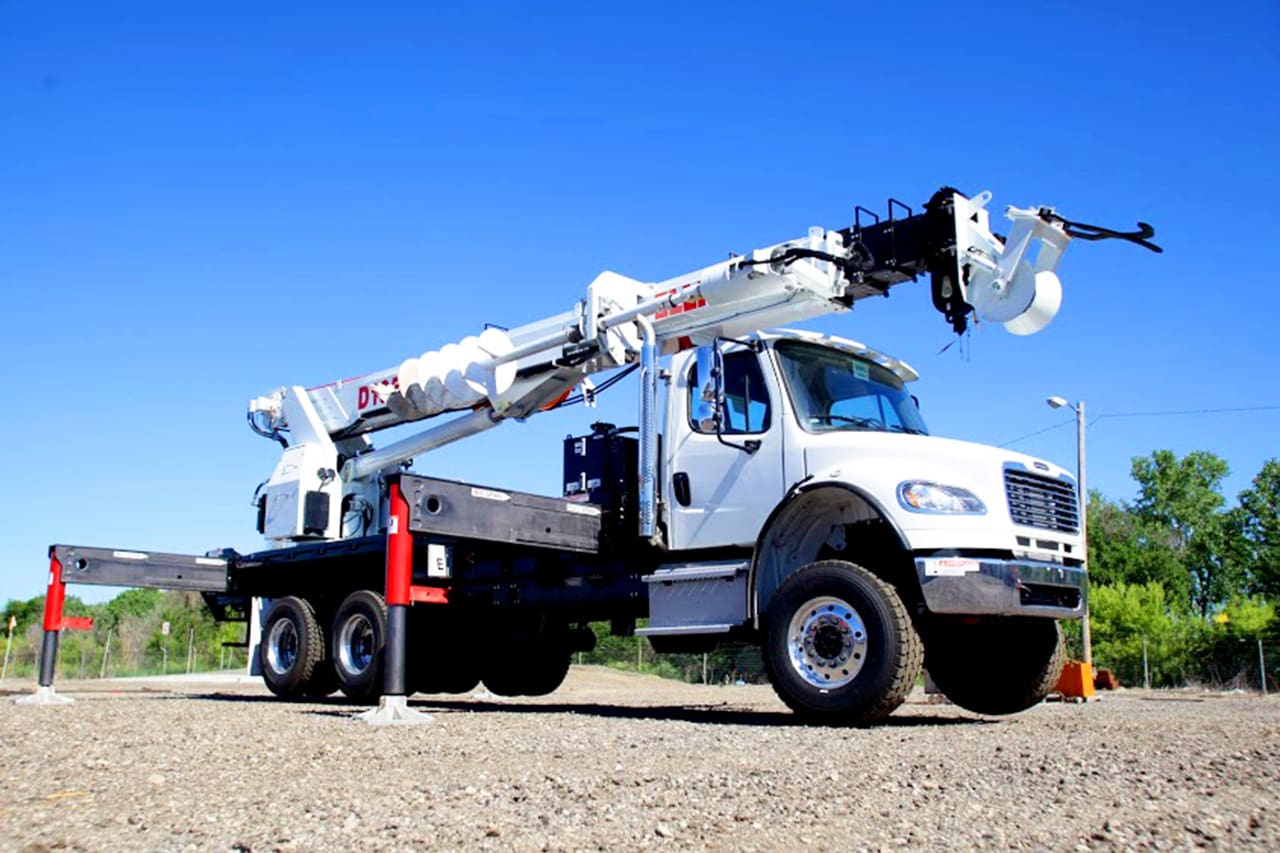
A digger derrick – large, crane-like truck with a corkscrew drilling attachment called the augur – is an essential piece of equipment in the utility trucking industry.
They’re used for telephone pole installation, electrical pole installation, trimming tree branches, roadwork, construction, mining and so many other applications that require a fast and effective method of boring holes in the ground.
Removal of poles is a principle task that digger derricks are routinely used for, but there are certain protocols that have to be followed when doing so. Rocking a pole loose, for example, or using the load line to remove a pole by brute force are not only prohibited by manufacturers, these actions can cause extensive and expensive damages to the equipment and put them out of commission while they are undergoing repair.
Below, we’re listing 8 useful tips that will help you accomplish the job of pole removal without taking any unnecessary risks with your derrick digger:
- If a pole is deeply embedded in the ground or frozen or fastened in place, don’t use force to try and dislodge it. Use a pole puller instead. You may need to dig a few holes with the augur on the digger derrick to loosen the soil holding the pole in place, so the puller can do the extraction work more easily.
- After the pole has been loosened, use the lift cylinders to lift the suspended pole, and use the pole guides to keep control. Don’t use the pole guides to actually lift the pole.
- Make sure that the rigging that attaches the pole to the load line is above the pole’s balance point. This will keep the pole vertical.
- Don’t lose control of the pole at any time. Doing so, can make its movement unpredictable and lead to both injuries and damage to the equipment itself.
- Before you select a digger derrick for the job, you must ascertain the weight of the free-hanging pole. If you don’t know the load weight, you can find charts that will give you an approximation based on the length and building material of the pole. While doing the calculation, take any attachments to the pole (like transformers and insulators) into consideration too, as they will contribute to the total weight.
- Refer to the digger derrick’s load chart to make sure it has the capacity to lift the load throughout the extraction process – from the beginning to the final placement point.
- Always inspect your digger derrick for accidental damage after the completion of a job. Look for rust, peeling paint, fine cracks, loose fasteners or any other visible damage to the boom, subframe and pedestal.
- Before every shift, make sure the operators are performing a test of all the range of motion functions, as instructed by the American National Standards Institute (ANSI A10.31). This ensures that the truck is fully functional and there is less chance of something going wrong at the jobsite and causing severe injuries or death.
Looking to buy a new or used digger derrick?
Custom Truck One Source is America’s first and true single-source provider of trucks and heavy equipment, and we’re standing by to help you make the best selection from our extensive inventory. Find the equipment that is most suited to your business, and we’ll help you with financing too!

